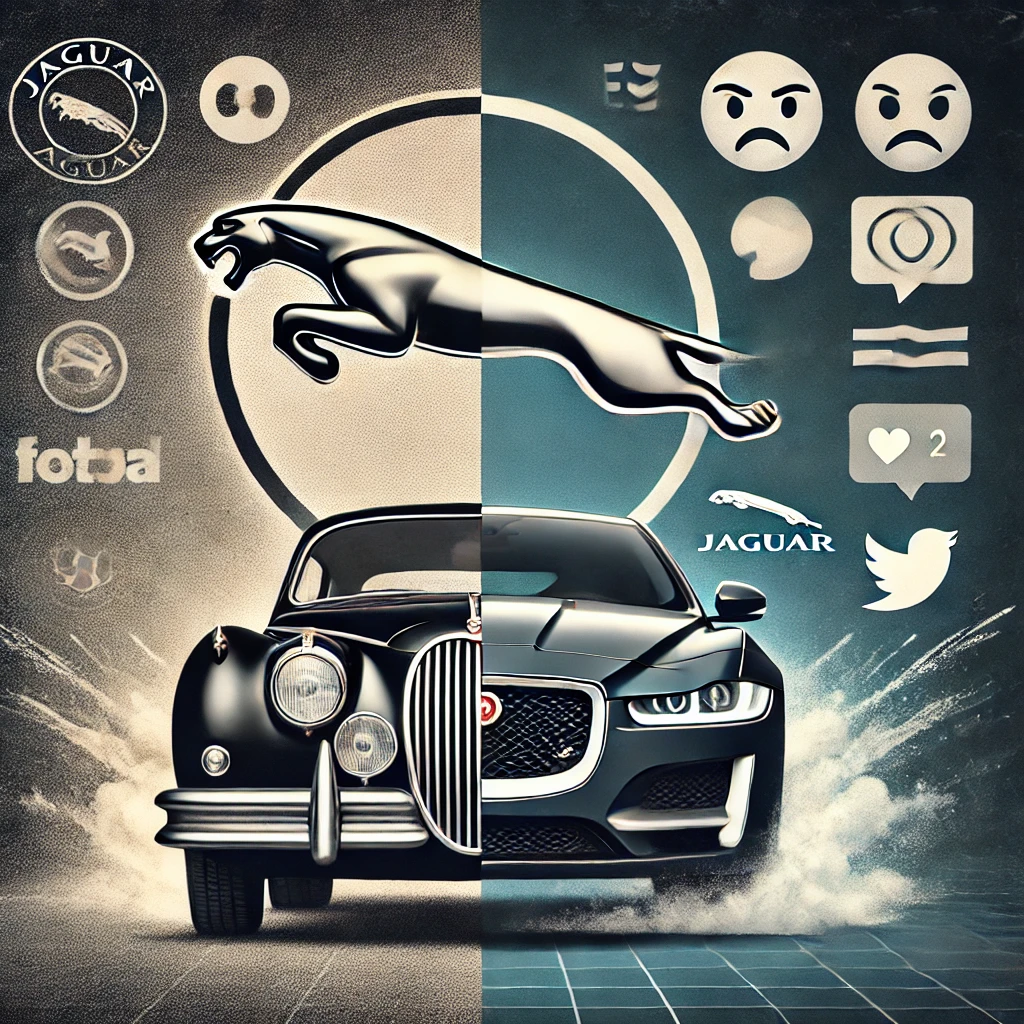Background
In late 2024, Jaguar, the iconic British luxury carmaker, unveiled a major rebrand in an effort to modernize its image. The rebrand involved replacing the company’s classic leaping jaguar logo with a minimalist geometric “J” design, alongside a bold advertising campaign emphasizing diversity and sustainability. The launch coincided with Jaguar’s shift towards electric vehicles (EVs), introducing three new models.
The Old Jaguar
Classic lines, classic engineering. The old Jaguar had a real brand.

The New Jaguar
I really can’t tell what’s happening here.
Challenges
- Alienating the Core Audience: Jaguar’s traditional customer base—luxury car enthusiasts—often values heritage, craftsmanship, and exclusivity. The rebrand’s heavy focus on progressive messaging and modern aesthetics risked alienating this group.
- Loss of Iconic Symbolism: The growling big cat logo, synonymous with speed, power, and elegance, was a cornerstone of Jaguar’s identity. Replacing it with a generic “J” removed a key connection to the brand’s legacy.
- Online Backlash: The rebrand was met with ridicule on social media, with many comparing it to other high-profile marketing missteps. Critics described the campaign as “out of touch” and likened it to a “Bud Light moment” for Jaguar.
- Product Design Criticism: The new EVs showcased as part of the rebrand were mocked for their uninspiring aesthetics, with some users likening the vehicles to “appliances on wheels.”
Look at Some of this Feedback from Around the Interwebs: PS, I couldn’t find any articles praising the carmaker.
Jaguar’s Marketing Director Needs to be Put in Prison…
Radical Jaguar rebrand and new logo sparks ire online
Jaguar rebrand: Ditching legacy for “Exuberant Modernism”—a risk worth taking?
Why the Rebrand is Being Called a Failure
- Disconnect with Brand Values: Jaguar’s heritage is rooted in luxury and performance. The rebrand’s attempt to embrace a younger, more progressive audience failed to resonate with its core market.
- Lack of Authenticity: Critics argued that the rebrand felt forced, prioritizing trendy messaging over genuine innovation or connection to Jaguar’s automotive expertise.
- Negative Public Perception: The widespread mockery on social media overshadowed the campaign’s intended message. Rather than generating excitement, it invited skepticism and ridicule.
- Uninspiring Product Launches: The vehicles tied to the rebrand failed to excite, with designs that many felt lacked the charisma and elegance associated with Jaguar.


Lessons from Jaguar’s Rebranding Misstep
- Know Your Audience: Rebranding should be an evolution, not a reinvention. Brands must balance modern aspirations with the values their loyal customers hold dear.
- Preserve Iconic Elements: Logos and symbols are powerful markers of identity. Removing a beloved emblem like the leaping jaguar risks erasing years of brand equity.
- Authenticity Matters: Effective rebrands are built on genuine values and clear communication, not simply following societal trends.
- Test the Waters: Jaguar could have piloted the new branding with smaller campaigns or focus groups to gauge reactions before a full-scale launch.
- Pair Bold Moves with Strong Products: A rebrand can succeed if it’s backed by exceptional products. Unimpressive vehicle designs compounded the negative reception.
Results
The Jaguar rebrand has become a cautionary tale in marketing circles. While the company aimed to reposition itself as a forward-thinking EV leader, the campaign’s reception highlighted the risks of alienating a loyal audience while failing to attract new customers. The backlash also underscores the importance of aligning brand values with customer expectations.
This case study highlights how even the most iconic brands can stumble if rebranding efforts are not carefully aligned with audience expectations and core identity. Jaguar’s experience offers valuable lessons for businesses planning major transformations.


